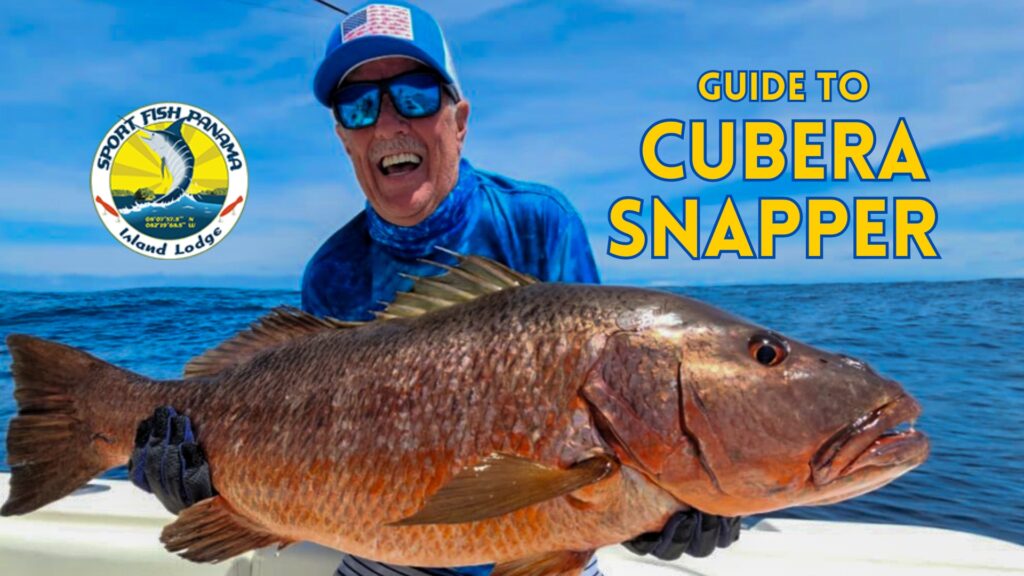A world-class cubera snapper fishery is one of the great charms of the Gulf of Chiriquí. At the Sport Fish Panama Island Lodge, we are literally surrounded by some of the best cubera fishing you’ll find anywhere.
Many of our guests come to the lodge specifically to catch big snapper. Many others experience the incredible appeal of big snapper fishing for the first time. Our boats not only catch lots of them, but we release some true giants of the species.
The site of a giant cubera snapper exploding on a popper is unlike anything else in fishing. Often it looks like a hand grenade has exploded where your Yo-Zuri once was. Once you hook the thing, it becomes your job to stop a Mack truck of a fish that’s intent on getting back into the rocks and crevices from which it came.
What follows is our guide to the cubera snapper fishing in this part of the world. It includes a bit of detail and specifics on times and seasons, but as with most everything that relates to these incredible fish, it is the story and experience of tangling with the reef maulers that drives this guide.
When to Catch Cubera Snapper in the Gulf of Chiriquí
We catch cubera snapper year-round. There are two main peaks in the season: from November through March and from about the first of July through the end of August.
A good snapper in this part of the world runs about 40 pounds. A real one, a trophy, comes in around the 70-pound mark. We catch plenty of fish to this size and sometimes even bigger.
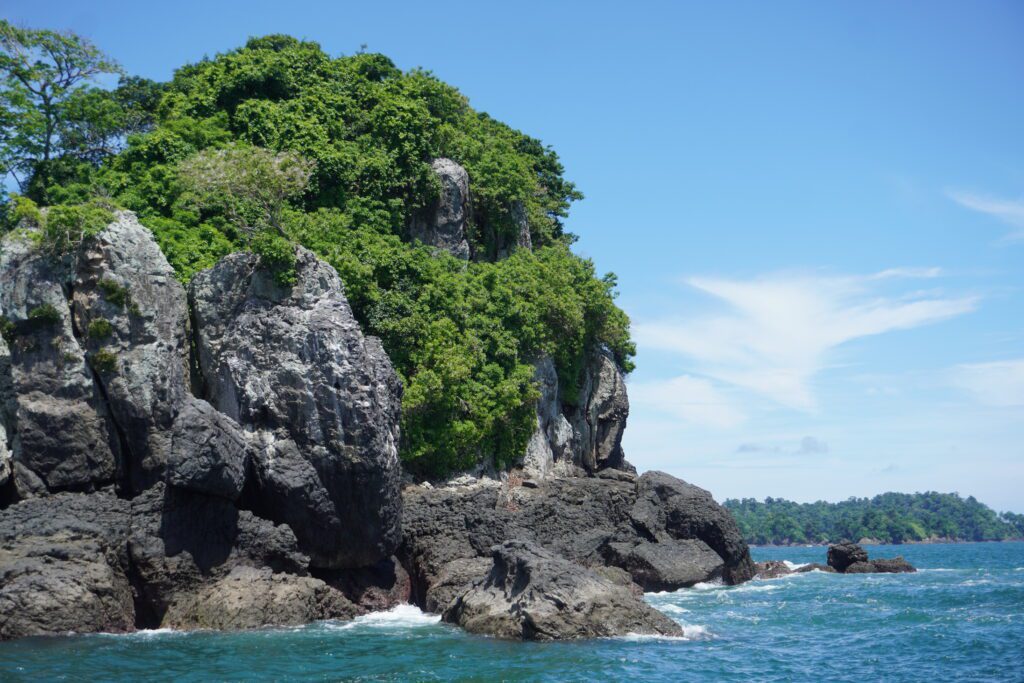
Part of the reason why the cubera fishing is so productive here lies in the habitat. The Gulf of Chiriquí is populated by hundreds of small islands and thousands of underwater structures. This topography creates plenty of places for snapper to lurk, waiting to ambush whatever hapless bait (or topwater lure) happens by.
Cubera snapper are structure-oriented fish. They prowl rocky shorelines and lurk above and within pinnacles and high spots that rise from the depths.

Our fleet of catamarans, and the gear that we deploy, are perfectly suited to take full advantage of this place. What follows are three of our favorite methods of targeting cubera snapper. Be warned, however, that if you choose to read what follows you will likely want to come try it for yourself.
Cubera Snapper on a Popper- Perhaps Central America’s Ultimate Inshore Fishing Experience
Should you be fortunate enough to witness the power and spectacle of a big cubera snapper blowing up on a Yo-Zuri Mag Bull, it is a sight that could well be with you for the rest of your life. Sometimes when these incredible fish crash a popper from beneath, the result looks like an explosion on the surface of the ocean.
Sometimes a cubera will swirl on a popper, missing it. Give the lure a pause, give it a twitch… then bang. The fish engulfs it.
Sometimes the bite happens when you are watching the popper. Other times it takes place when you are distracted, maybe looking at your buddy, talking, as you retrieve your lure.
Glurg. Glurg. Smash.
No matter how it happens or what the leadup, what takes place immediately after hook-up is an experience all its own. The consistent presence of giant cubera snapper is central to the reason why invest in high quality, heavy duty Shimano spinning tackle.
The sequence is always the same. A big snapper mashes the popper. You hook it and the giant creature makes a hellish, mad dash for the structure from which it came. The angler’s job is to keep the fish out of the rocks.

The reel’s 80-pound braid and 20-pounds of drag strain, the person on the rod holds on for dear life… likely hollering. Probably exclaiming curse words in excitement, face strained by the force required to keep the rod off the gunnel.
The strain is mitigated by adrenaline and excitement. Your brain is likely taking in the spectacle, trying to process just how incredible what just happened truly is. Many fisherman fish their whole lives without ever catching a big snapper on a topwater.
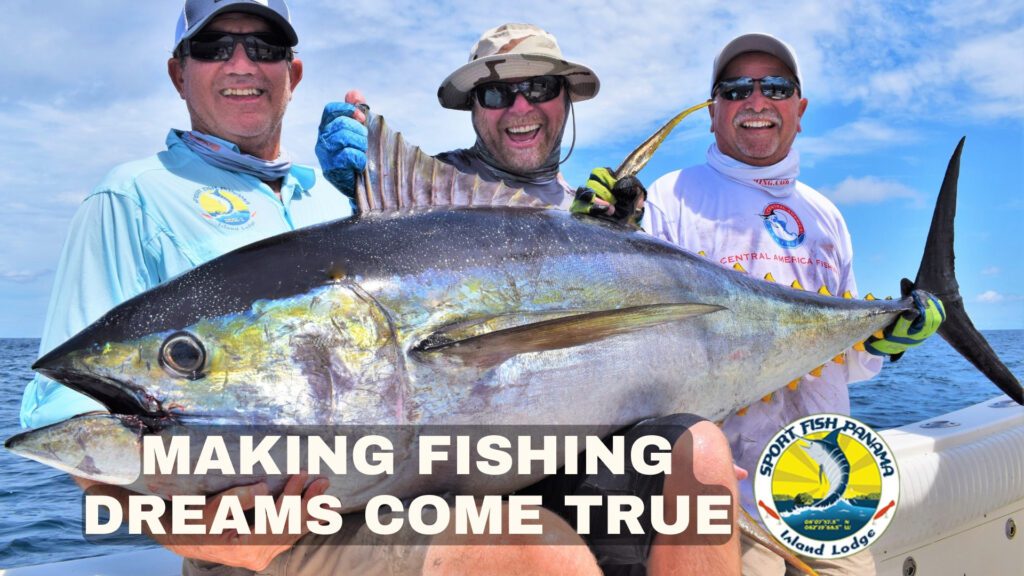
The experience of fighting a big snapper on this type of gear is singular.
A big tuna can also dump line off a reel. The pull, thrust, power and torque of a big cubera is perhaps just as remarkable as the run of a tuna, but it is also different.
If hooking a tuna is like connecting your line to a high-speed passenger train, trying to keep a big popper-eating cubera snapper out of the rocks might be akin to hooking a dump truck (one of the big ones.. fully loaded…. The kind that drives down the freeway with rocks and dirt tumbling out from above and below it’s lift gate).
You’ll have seen, felt and heard the strike, now comes time to try to stop something that could well prove unstoppable. The adrenaline that courses through your body and the uncertainty of the outcome further fuels the intrigue of the situation. But that’s what this is all about.
The cubera’s broad, broom-shaped tail imparts power and will. The big ones have broad shoulders and powerful pectoral fins.
As you winch the thing off the bottom and toward the light of the surface, the water will likely be bluish or greenish. It will have a tint, less clear than the blue of water offshore. The deep color of the fish will shine a bronze, deep red or orange—a beacon from the depths.
This sight is another that you may never forget.
Around the world, many of the ocean’s bottom fish share this red coloration. At depth, where these creatures live, the red spectrum of light disappears, absorbed by the ocean. This renders these fish invisible.
As the fish comes to the surface, where red spectra of light once again bounce off of it, it becomes visible once again. The bronze shimmer of a deep snapper can burn itself into your memory.

As you work the fish even closer, you begin to make out its other characteristics. A big cubera snapper has giant head. Their mouths are enclosed within lips that are large and dexterous enough to perhaps be at home on the face of a horse.
The body of the fish is protected by a patchwork of large, broad scales. Each scale might be about the size of a grown man’s thumbnail. Were you so inclined, the scales might work well as guitar picks. The creatures have large, sentient-looking eyes that are brown and very fascinating to look at.
The most impressive part of the cubera snapper, however, is its teeth. They are large, powerful and sharp enough to imagine that a big snapper might be able to bite off a man’s leg. This might be an exaggeration, but you’d certainly not like to test this theory. Their jaws are powerful enough to destroy run-of-the-mill poppers (this is why we use Yo-Zuris).
Live Baiting
Pulling a couple of live bonito on 50-wides over the top of high spots or adjacent to rocky ledges that encircle islands is a great way to target big cuberas. We deploy these baits on circle hooks with bridle rigs.
We run two of them in outriggers, often accompanied by a live blue runner or small bonito in the center rigger. Our crews bump troll these baits, with the boat into and out of gear just often enough to keep them in position. We set the reels to near free spool with the clickers on.
When a cubera comes up to smash one of these live baits, we’ll throw the reel into freespool and give a drop back of four or five seconds. Sometimes the fish consumes the whole bait the first time. Sometimes it chops it into two and we’ll wait, allowing the bait to sink in place, and give the fish time to return and finish its meal.
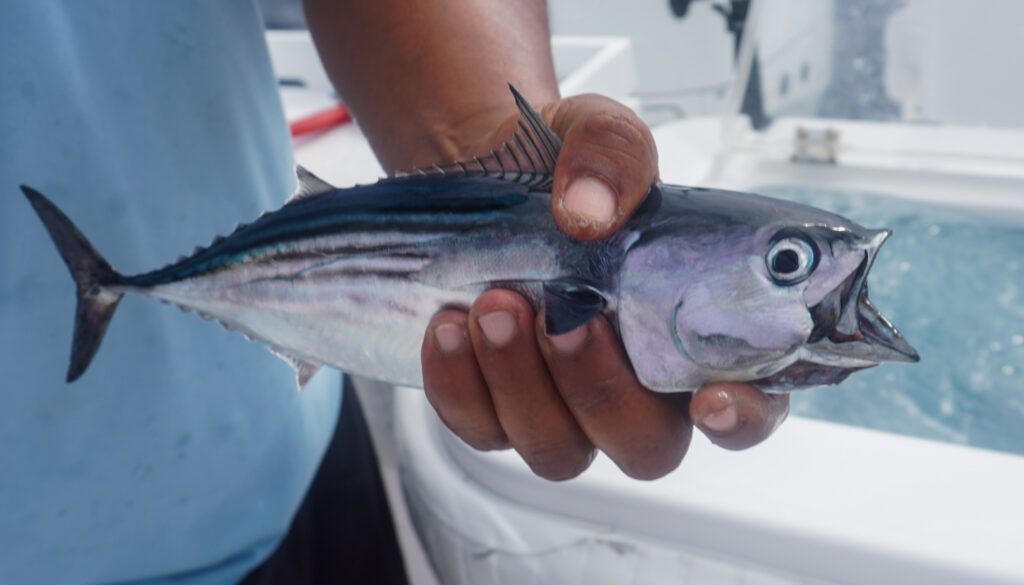
When the angler feels the line sprinting away, he or she will throw the reel into gear and its game on. The objective is the same as it is with a popper-hooked fish. You need to keep the snapper out of the rocks.
This might sound like an easy proposition on 50-pound gear. It’s not.
Sometimes the cubera bites result in a hook-up. Sometimes you’ll reel in the remnants of a bonito that looks like it’s been mauled by a tiger.
Dead Bait Fishing
Another great way to target cubera snapper in the Gulf of Chiriquí is to drift dead bait over high spots. Deployed on 50-pound tackle, this approach pays dividends.
Cubera snapper often lurk beneath the swarms of bonito that inhabit the Gulf of Chiriquí. In addition to snatching the occasional live bonito, cubera await dead or injured fish to drift down from above. When a bonito dies, whether chopped by a wahoo or snapper or other cause, it drifts down naturally to the cubera on the bottom.

Our approach mirrors this process. We drift dead whole or chunked bonito to the bottom. The angler allows the bait to drift naturally, settling onto the high spot where the snapper lurk.
The angler keeps the reel in fee spool, feeling the line. Chopping bites of a feeding snapper often betray the presence of a cubera on the other end. When the line starts to move away, as the fish carried its meal with it, the angler engages the reel and hooks the fish.
Once hooked, its game on. The need to get the fish away from the rocks is even more urgent, as the cubera is closer to the rocks in this scenario—versus a fish that has taken a lure or live bait on the surface.
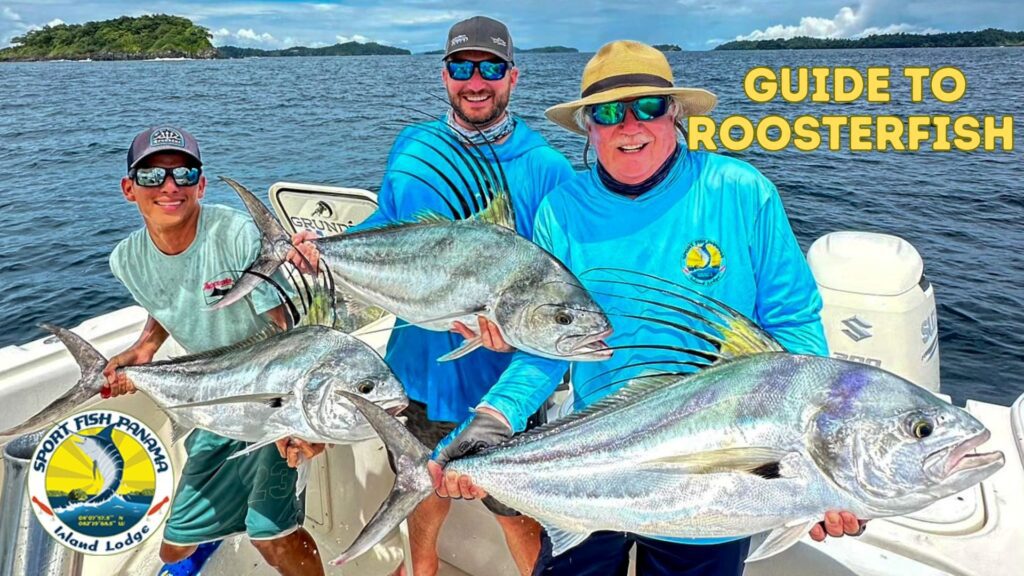
 (866) 245-1492
(866) 245-1492 

